-
 Bitcoin
Bitcoin $117900
0.31% -
 Ethereum
Ethereum $3766
0.28% -
 XRP
XRP $3.176
-0.31% -
 Tether USDt
Tether USDt $1.000
0.00% -
 BNB
BNB $795.6
1.51% -
 Solana
Solana $186.8
-1.09% -
 USDC
USDC $0.9999
-0.01% -
 Dogecoin
Dogecoin $0.2353
-1.33% -
 TRON
TRON $0.3226
1.49% -
 Cardano
Cardano $0.8172
-1.08% -
 Sui
Sui $4.178
3.06% -
 Hyperliquid
Hyperliquid $43.05
-3.39% -
 Stellar
Stellar $0.4367
-0.57% -
 Chainlink
Chainlink $18.62
1.47% -
 Hedera
Hedera $0.2828
6.63% -
 Bitcoin Cash
Bitcoin Cash $584.7
5.65% -
 Avalanche
Avalanche $24.81
2.53% -
 Litecoin
Litecoin $112.8
-0.88% -
 UNUS SED LEO
UNUS SED LEO $8.975
-0.08% -
 Shiba Inu
Shiba Inu $0.00001395
-1.07% -
 Toncoin
Toncoin $3.285
-1.05% -
 Ethena USDe
Ethena USDe $1.001
0.01% -
 Polkadot
Polkadot $4.123
0.76% -
 Uniswap
Uniswap $10.49
-0.18% -
 Monero
Monero $326.5
0.14% -
 Dai
Dai $0.9999
-0.02% -
 Bitget Token
Bitget Token $4.576
0.34% -
 Pepe
Pepe $0.00001247
-1.55% -
 Cronos
Cronos $0.1400
3.77% -
 Aave
Aave $295.1
-0.73%
How to adjust the long and short momentum line parameters? Which group is used for short-term trading?
Adjusting long and short momentum line parameters is key in crypto trading; scalpers and day traders benefit most from short-term settings.
Jun 09, 2025 at 12:15 pm
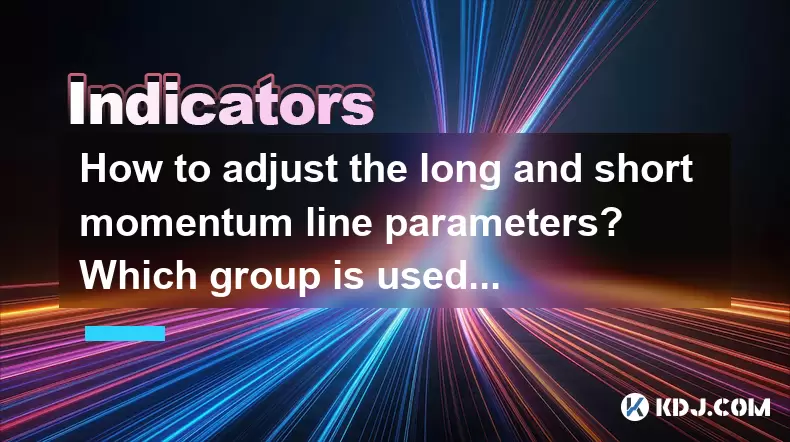
Adjusting the long and short momentum line parameters is a crucial aspect of technical analysis in cryptocurrency trading. These parameters help traders identify trends and potential reversal points, enabling them to make informed decisions. In this article, we will explore how to adjust these parameters and discuss which group is best suited for short-term trading.
Understanding Long and Short Momentum Lines
Long and short momentum lines are technical indicators used to assess the strength and direction of price movements in cryptocurrency markets. The long momentum line typically uses a longer period to smooth out short-term fluctuations, while the short momentum line focuses on more immediate price changes. These lines help traders identify potential entry and exit points based on the convergence and divergence of these indicators.
To effectively use these lines, traders must understand how to adjust their parameters. The parameters include the period over which the momentum is calculated and the type of moving average used, such as simple or exponential.
Adjusting Long Momentum Line Parameters
Adjusting the parameters of the long momentum line involves setting the period and choosing the type of moving average. Here's how to do it:
Choose the period: The period for the long momentum line is typically longer, ranging from 50 to 200 periods. A longer period smooths out short-term fluctuations and provides a clearer view of the overall trend. For instance, setting the period to 100 will calculate the momentum over the last 100 periods.
Select the moving average type: Traders can choose between a simple moving average (SMA) or an exponential moving average (EMA). An SMA gives equal weight to all periods, while an EMA gives more weight to recent periods. For a long momentum line, an SMA might be more suitable due to its smoothing effect.
Apply the settings: Once you have chosen the period and moving average type, apply these settings to your trading platform. Most platforms allow you to input these values directly into the indicator settings.
Adjusting Short Momentum Line Parameters
The short momentum line focuses on shorter-term trends and requires different parameters:
Choose the period: The period for the short momentum line is shorter, typically ranging from 10 to 30 periods. A shorter period allows the line to react more quickly to price changes. For example, setting the period to 20 will calculate the momentum over the last 20 periods.
Select the moving average type: For the short momentum line, an EMA is often preferred because it reacts more quickly to recent price changes. This can help traders identify short-term trends more effectively.
Apply the settings: Input the chosen period and moving average type into your trading platform's indicator settings. This will generate the short momentum line based on your specified parameters.
Using Long and Short Momentum Lines Together
Once both long and short momentum lines are set up, traders can use them together to identify trading opportunities:
Convergence and divergence: When the short momentum line crosses above the long momentum line, it may indicate a bullish trend. Conversely, when the short momentum line crosses below the long momentum line, it may signal a bearish trend.
Trend confirmation: Use the long momentum line to confirm the overall trend direction. If the long momentum line is rising, it suggests a bullish trend, while a falling long momentum line indicates a bearish trend.
Entry and exit points: Traders can use the short momentum line to identify potential entry and exit points within the broader trend identified by the long momentum line. For example, a trader might enter a long position when the short momentum line crosses above the long momentum line during an uptrend.
Short-Term Trading Group
For short-term trading, the group of traders who focus on scalping or day trading is most suitable. These traders aim to capitalize on small price movements within a single trading day or even within minutes. Here's why this group is ideal for short-term trading:
Scalpers: Scalpers enter and exit trades quickly, often within seconds or minutes. They rely heavily on short-term indicators like the short momentum line to identify rapid price changes. Scalpers need to adjust their short momentum line parameters to shorter periods, such as 10 to 15 periods, to react swiftly to market movements.
Day traders: Day traders hold positions for a day or less, focusing on intraday price movements. They use the short momentum line to identify short-term trends and potential reversals. Day traders might set their short momentum line to a period of 20 to 30 periods to capture slightly longer intraday trends while still maintaining sensitivity to price changes.
Technical analysis: Both scalpers and day traders rely on technical analysis, using tools like the short momentum line to make quick decisions. They need to be proficient in adjusting their indicators to suit the fast-paced nature of short-term trading.
Adjusting Parameters for Different Cryptocurrencies
Different cryptocurrencies may require different parameter settings for the long and short momentum lines due to varying levels of volatility and market behavior. Here's how to adjust these parameters for different assets:
Bitcoin (BTC): As the most liquid and widely traded cryptocurrency, Bitcoin's price movements are relatively smooth. For the long momentum line, a period of 100 to 200 might be suitable, while the short momentum line could be set to 20 to 30 periods.
Ethereum (ETH): Ethereum often experiences more volatility than Bitcoin. Traders might set the long momentum line to 50 to 100 periods and the short momentum line to 15 to 25 periods to capture these fluctuations.
Altcoins: Smaller cryptocurrencies, or altcoins, can be highly volatile. For these assets, traders might use a long momentum line period of 20 to 50 periods and a short momentum line period of 10 to 20 periods to react quickly to rapid price changes.
Practical Example of Adjusting Momentum Line Parameters
Let's walk through a practical example of adjusting momentum line parameters for trading Bitcoin:
Choose the platform: Open your preferred trading platform, such as TradingView or MetaTrader.
Add the momentum indicator: Navigate to the indicators section and add the momentum indicator to your chart.
Set the long momentum line: For the long momentum line, set the period to 100 and choose a simple moving average (SMA). This will give you a smoothed view of the overall trend.
Set the short momentum line: For the short momentum line, set the period to 20 and choose an exponential moving average (EMA). This will help you identify short-term trends and potential entry points.
Analyze the chart: Observe how the short momentum line interacts with the long momentum line. Look for crossovers that may signal potential trading opportunities.
Adjust as needed: Based on your analysis, you may need to adjust the periods. For instance, if the market is particularly volatile, you might shorten the period of the short momentum line to 15 to react more quickly to price changes.
Frequently Asked Questions
- Can I use the same momentum line parameters for all cryptocurrencies?
No, different cryptocurrencies have different levels of volatility and market behavior. It's important to adjust the parameters of the long and short momentum lines based on the specific asset you are trading.
- How often should I adjust the momentum line parameters?
You should adjust the momentum line parameters as needed based on changes in market conditions. If you notice that the market is becoming more or less volatile, you may need to adjust the periods to better capture these changes.
- Is it necessary to use both long and short momentum lines for trading?
Using both long and short momentum lines can provide a more comprehensive view of the market. The long momentum line helps identify the overall trend, while the short momentum line can pinpoint potential entry and exit points within that trend.
- What other indicators can I use in conjunction with momentum lines?
Other indicators that can be used with momentum lines include the Relative Strength Index (RSI), Moving Average Convergence Divergence (MACD), and Bollinger Bands. These indicators can provide additional confirmation of trends and potential reversal points.
Disclaimer:info@kdj.com
The information provided is not trading advice. kdj.com does not assume any responsibility for any investments made based on the information provided in this article. Cryptocurrencies are highly volatile and it is highly recommended that you invest with caution after thorough research!
If you believe that the content used on this website infringes your copyright, please contact us immediately (info@kdj.com) and we will delete it promptly.
- Cryptos to Watch in 2025: Punisher Coin, Chainlink, and the Altcoin Arena
- 2025-07-27 18:30:13
- Bitcoin, Altcoins, Rebound: Navigating the Crypto Comeback Trail
- 2025-07-27 18:30:13
- Ethereum, Bitcoin, and Altcoins: A Shift in Crypto Tides?
- 2025-07-27 19:10:13
- Windtree Therapeutics' Bold BNB Strategy: A $520 Million Crypto Play
- 2025-07-27 19:10:13
- Solana, Staking, and Unilabs: What's the Buzz in the Crypto Space?
- 2025-07-27 16:50:13
- VeChain, HBAR, Remittix: Navigating the Crypto Landscape in 2025
- 2025-07-27 17:10:12
Related knowledge
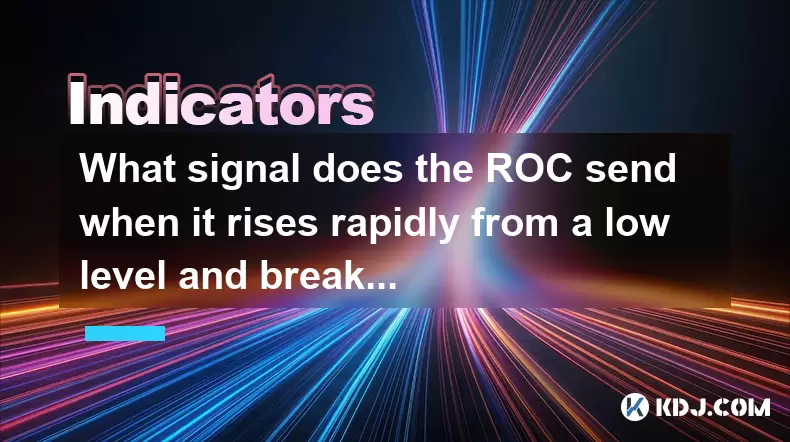
What signal does the ROC send when it rises rapidly from a low level and breaks through the zero axis?
Jul 27,2025 at 10:15am
Understanding the Rate of Change (ROC) IndicatorThe Rate of Change (ROC) is a momentum-based oscillator used in technical analysis to measure the perc...
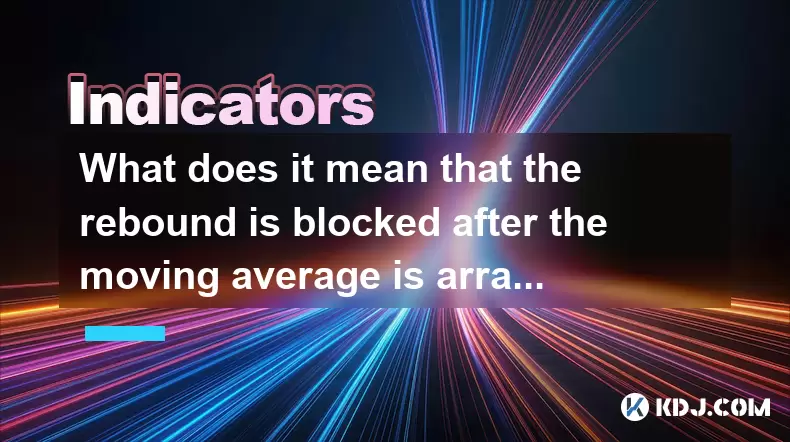
What does it mean that the rebound is blocked after the moving average is arranged in a short position for the first time?
Jul 26,2025 at 10:51am
Understanding the Short-Term Moving Average ConfigurationWhen traders refer to a 'short position arrangement' in moving averages, they are describing ...
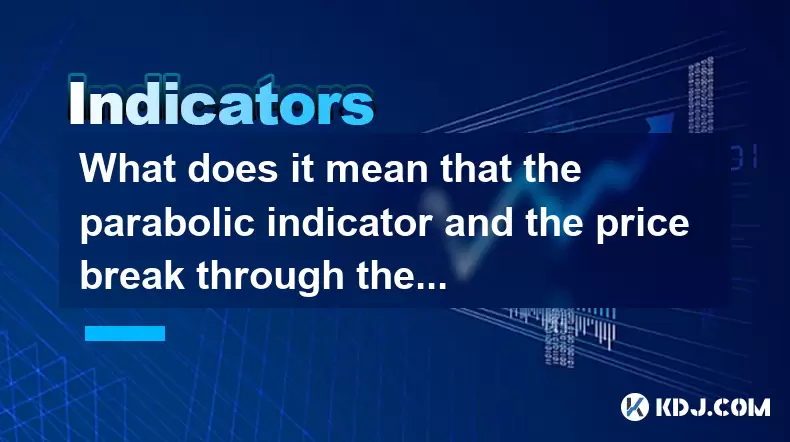
What does it mean that the parabolic indicator and the price break through the previous high at the same time?
Jul 26,2025 at 07:22pm
Understanding the Parabolic Indicator (SAR)The Parabolic SAR (Stop and Reverse) is a technical analysis tool developed by J. Welles Wilder to identify...
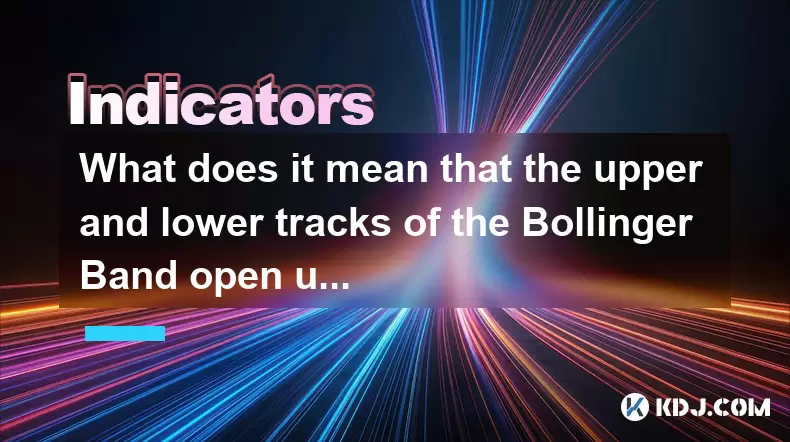
What does it mean that the upper and lower tracks of the Bollinger Band open upward at the same time?
Jul 27,2025 at 02:49pm
Understanding the Bollinger Band StructureThe Bollinger Band is a widely used technical analysis tool developed by John Bollinger. It consists of thre...
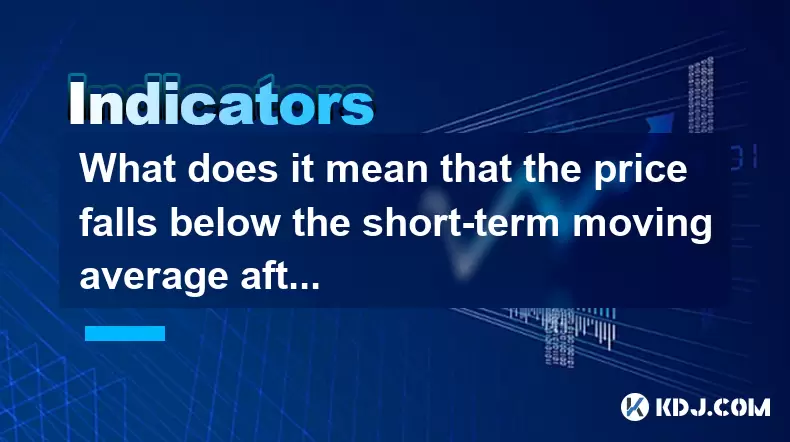
What does it mean that the price falls below the short-term moving average after the RSI top divergence?
Jul 26,2025 at 11:01pm
Understanding RSI Top Divergence in Cryptocurrency TradingThe Relative Strength Index (RSI) is a momentum oscillator widely used in cryptocurrency tra...
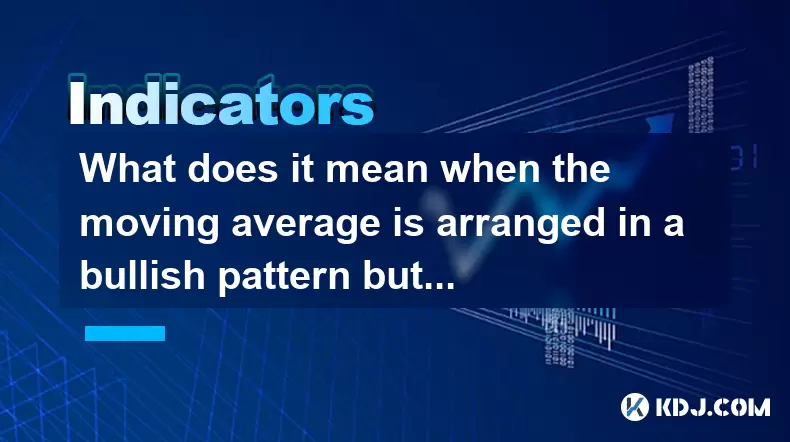
What does it mean when the moving average is arranged in a bullish pattern but the MACD bar is shortened?
Jul 27,2025 at 06:07am
Understanding the Bullish Moving Average PatternWhen traders observe a bullish moving average pattern, they typically refer to a configuration where s...

What signal does the ROC send when it rises rapidly from a low level and breaks through the zero axis?
Jul 27,2025 at 10:15am
Understanding the Rate of Change (ROC) IndicatorThe Rate of Change (ROC) is a momentum-based oscillator used in technical analysis to measure the perc...

What does it mean that the rebound is blocked after the moving average is arranged in a short position for the first time?
Jul 26,2025 at 10:51am
Understanding the Short-Term Moving Average ConfigurationWhen traders refer to a 'short position arrangement' in moving averages, they are describing ...

What does it mean that the parabolic indicator and the price break through the previous high at the same time?
Jul 26,2025 at 07:22pm
Understanding the Parabolic Indicator (SAR)The Parabolic SAR (Stop and Reverse) is a technical analysis tool developed by J. Welles Wilder to identify...

What does it mean that the upper and lower tracks of the Bollinger Band open upward at the same time?
Jul 27,2025 at 02:49pm
Understanding the Bollinger Band StructureThe Bollinger Band is a widely used technical analysis tool developed by John Bollinger. It consists of thre...

What does it mean that the price falls below the short-term moving average after the RSI top divergence?
Jul 26,2025 at 11:01pm
Understanding RSI Top Divergence in Cryptocurrency TradingThe Relative Strength Index (RSI) is a momentum oscillator widely used in cryptocurrency tra...

What does it mean when the moving average is arranged in a bullish pattern but the MACD bar is shortened?
Jul 27,2025 at 06:07am
Understanding the Bullish Moving Average PatternWhen traders observe a bullish moving average pattern, they typically refer to a configuration where s...
See all articles

























































































